This blog is the first in our series that examines omnichannel marketing and advertising from the perspective of developing an integrated media strategy to support the entire customer journey.
- In part 1, we discuss the state of omnichannel marketing in 2018
- In part 2, we look at how to use advertising to support an omnichannel marketing strategy
- Part 3 explains the Bench audience mapping methodology.
Omnichannel has moved beyond being just a hyped marketing term to becoming the reality that all marketers now exist within.
For a moment, imagine yourself as a potential consumer of any product or service – whether B2C or B2B – and think about how many touchpoints are involved in making a typical considered purchase. Yes, getting the customer experience right across all of these channels is no small feat.
Based on recent research, PWC / Kantar Retail even go so far as saying that:
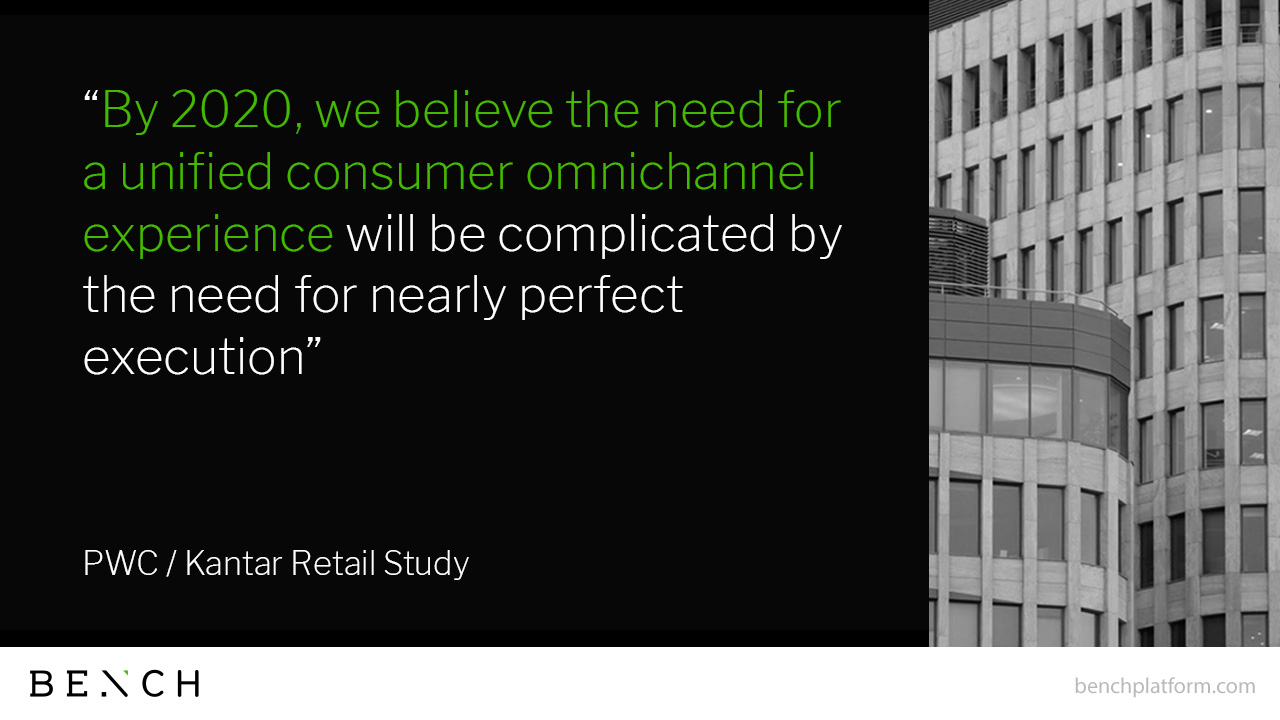
Source: Retailing 2020: Winning in a polarized world
If ‘nearly perfect execution’ sounds stress-inducing, well, that’s because it is. So many channels, so little time! Even executing well in a single channel involves a considerable investment of time and marketing resources.
While the PWC report focuses on the retail experience, omnichannel excellence is even more important in contexts where the average purchase price is high as is the case in luxury and business-to-business settings.
Goodbye, Cruel (Single-Channel Marketing) World
Before we go down the omnichannel marketing rabbit hole with all of its precarious twists and turns, let’s pause and recap on the omni channel definition.
What is omnichannel? And how is it different to multi channel marketing?
Or is it all just semantics?
Unlike the majority of new buzzwords that vie for a marketer’s limited headspace every year, there is an important distinction between these two seemingly similar terms.
Multi-channel marketing refers primarily to reaching the right customers using a number of marketing channels.
On the other hand, an omnichannel marketing approach ‘closes the loop’ in order to create a seamless experience regardless of the particular channel:
Omnichannel marketing focuses on the customer experience to ensure that it is consistent across all touchpoints of the journey.
Thinking about it in a slightly different way:
The focus of multi-channel marketing is on executing across specific channels whereas omnichannel marketing is channel-agnostic and centers on nurturing a prospect through the entire buyer journey.

Make Your Marketing Omnipotent Through Omnipresence
Hearing all of this might make you say to yourself proudly: “hold on, but most of my marketing is already omnichannel!”
But is it really?
The reality is that you may be ‘multi-channel’ – as defined above – but ‘tis a long hard road to true omnichannel perfection.
It is a highway paved with siloed technology that doesn’t talk to each other, channel attribution confusion and customer backlash as a result of the irrelevant marketing they have to endure along the way.
Here are some typical roadblocks to implementing a single customer view within an organization:
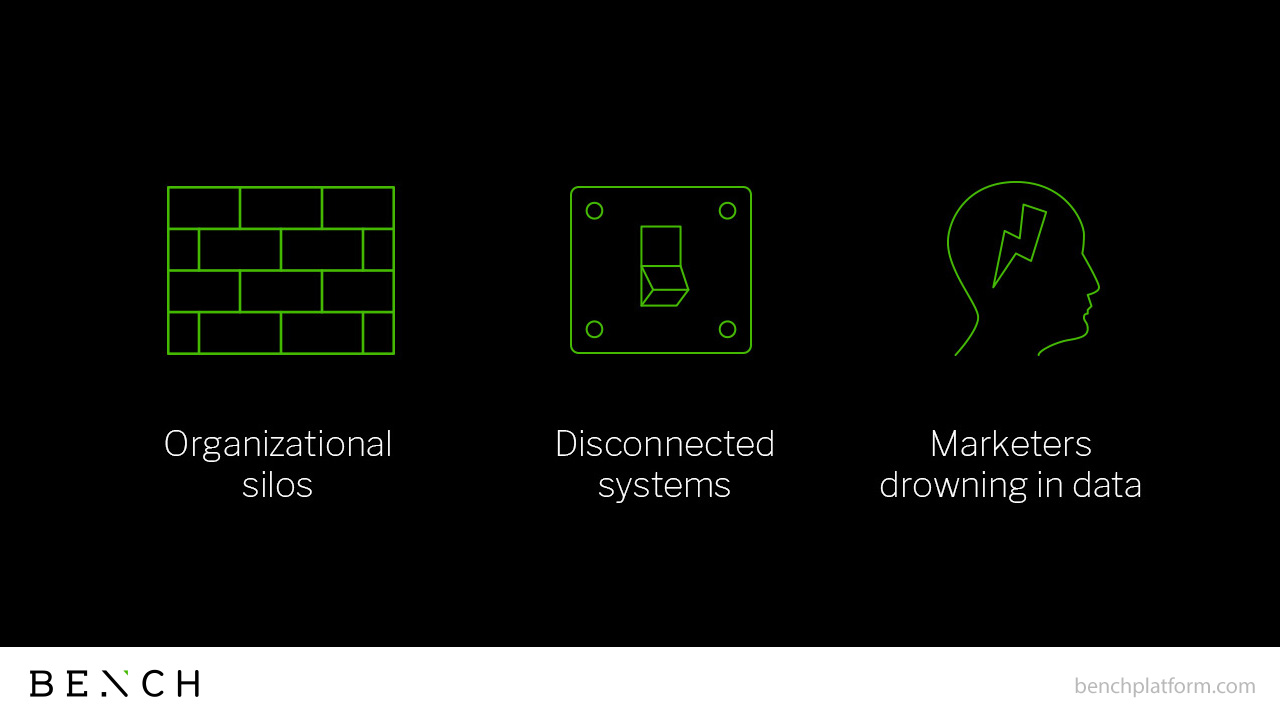
So, achieving a true ‘single customer view’ is something very few marketers can lay claim to.
To illustrate this point, here’s a statistic from a retail industry study that can be easily extrapolated to other verticals:
Even given the fact that this study is a few years old, the numbers haven’t changed drastically and the problems remain the same.
So how do you achieve true omnipresence with your marketing so that it supports each stage of the path-to-purchase?
The Evolution From Channel to Mindset Planning
While a large part of the ‘quest for the holy omnichannel grail’ is based around aligning stakeholders and integrating systems, there’s a bigger change that needs to happen within your marketing team and the wider business.
This is a change in the way that you approach marketing in general and media planning in particular. At Bench, we refer to this as ‘mindset planning’:
Mindset planning lasers in on the high-level objectives that marketers help the business to achieve and the specific channels themselves become a secondary consideration.
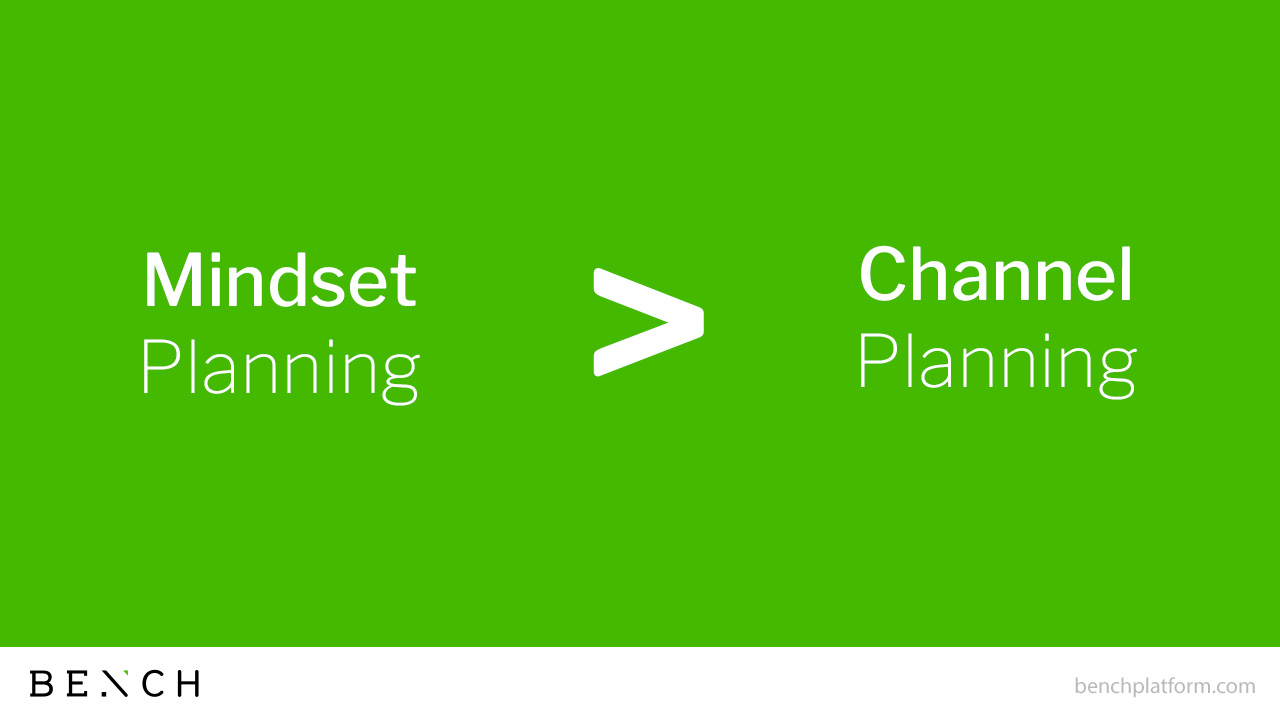
It is a considerable shift from how marketing strategy is currently set and evaluated based on KPIs, which includes your usual assortment of CPAs, CPLs, views, impressions, etc. This way of measuring marketing often has vanity metrics attached to various channels that don’t actually support the intended business outcomes.
To illustrate this point, here’s what the old way of marketing planning looks like:
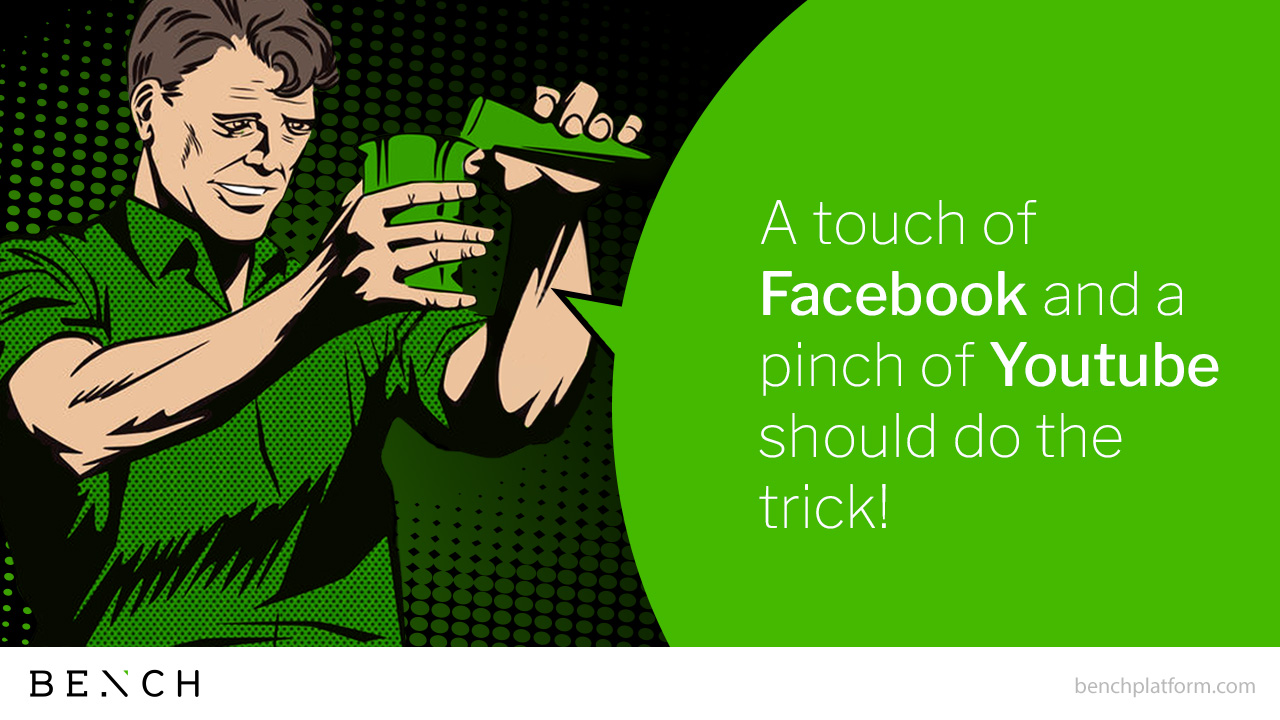
Full Funnel Or Bust
Mindset planning flips the traditional planning notion on its head by first zeroing in on the high level business objectives and then using the Bench framework to break this down into individual goals at each stage of the funnel.
Then using an agile approach, messages and other key variables receive ongoing optimization at each layer of the funnel based on the desired business goals. This iterative process uses the buyer journey stages as goals and channels become nothing more than experiments that can be validated based on performance.
Here’s a summary of the differences between the two approaches:
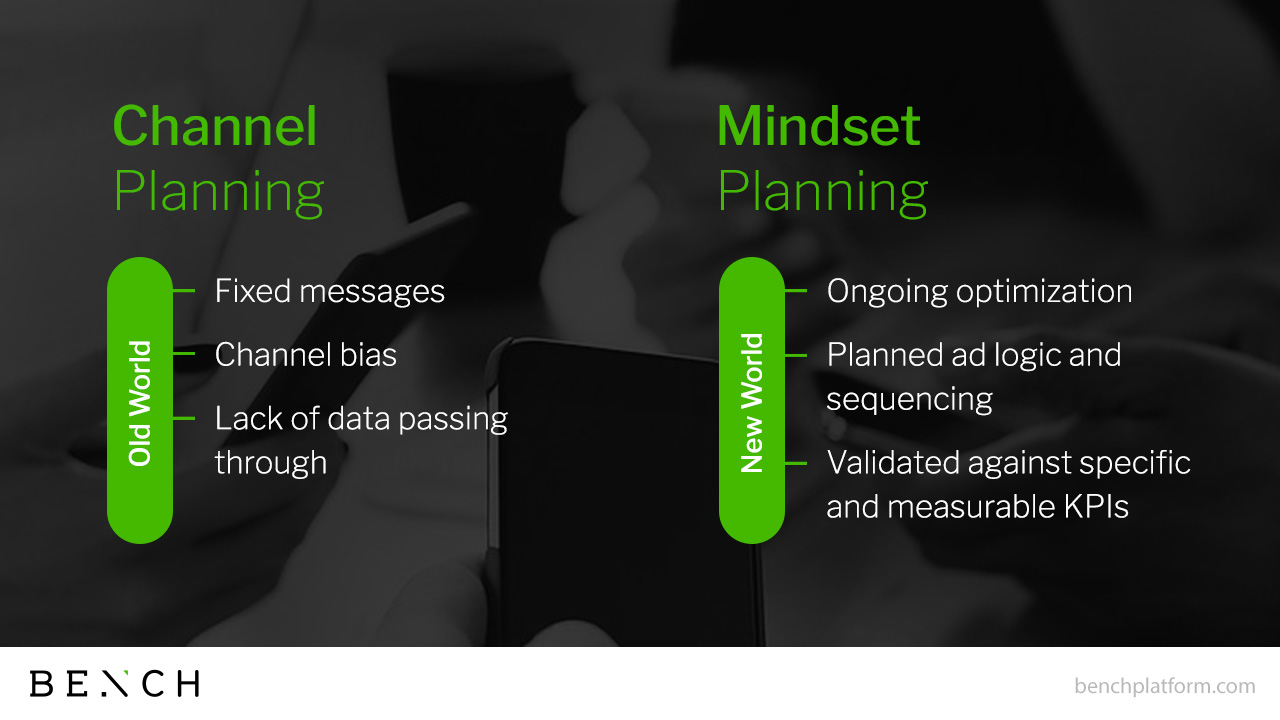
To reiterate, the foundation of mindset planning is a focus on the entire buyer journey and how each funnel stage leads to the next. While there will be certain channels that are more suitable to each stage, this is not the primary consideration as they are just that – tactics.
These tactics may include direct mail, digital advertising, events or any combination of marketing activities. The point is to ensure that the right mix of tactics aligns with the end goal of generating a sale or conversion. This can only be through experimentation.
As a brand marketer, your job is to ensure that this view of customer engagement is not only adopted internally by your business but also by your external agency partners. This also includes holding those partners accountable to results-based outcomes.
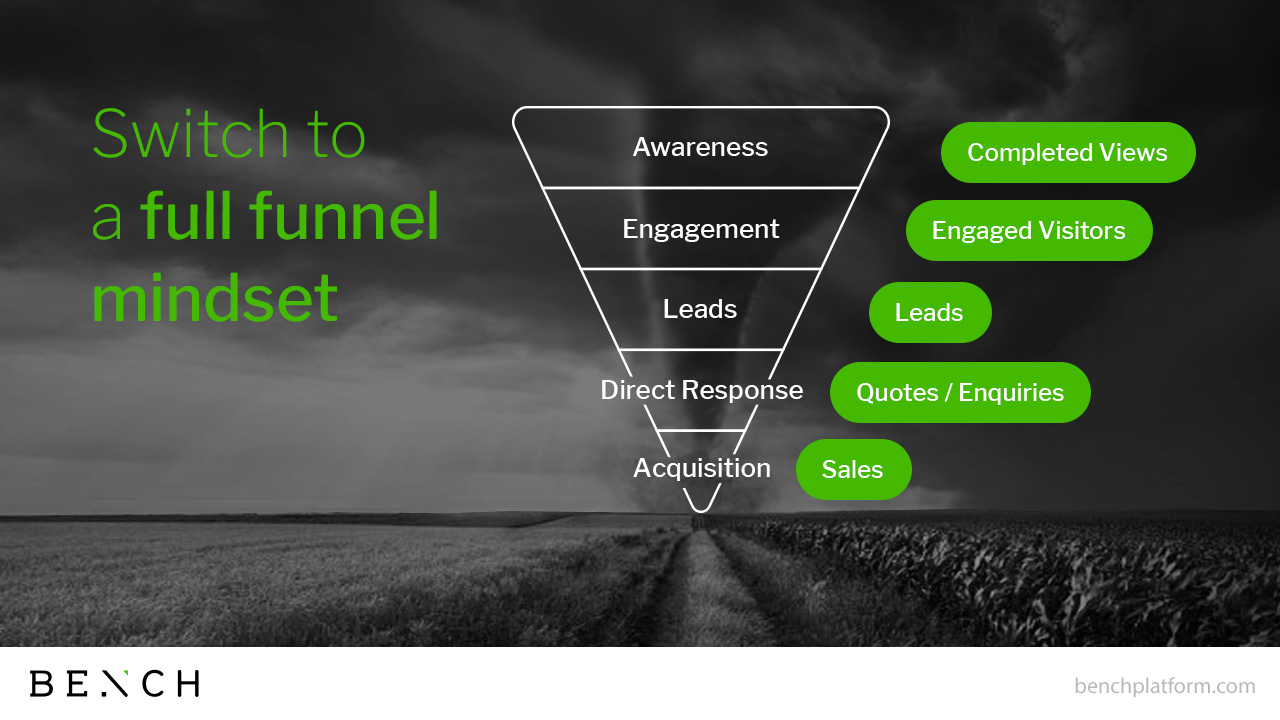
But it’s not just about changing your thinking conceptually about how you view marketing success. In a practical sense, there’s also some grunt work to be done.
A single customer view doesn’t exist without a lot of systems feeding useful information into your unified dashboard. Given that omnichannel success is based on integrating data, systems and processes, your often disparate technology infrastructure has to work in harmony.
Getting Omnichannel Customer Experience Right By Unifying the Tech
While it may sound strange to talk about technology as being the cornerstone of a successful customer experience program, the reality is that, well, it is.
Executing well across multiple marketing channels and then tracking the entire prospect journey from ‘A to B’ as a single customer view is a complex undertaking.
Only your technology team can help you integrate all of the systems in your business – from your CRM and marketing automation system, to your advertising data management platform, call center software and billing – to make them work in concert.
While IT can help with integrating your internal systems, it’s also necessary to bring your advertising together into one single platform.
In this case, the Bench omni channel advertising platform can help by bringing together all of your advertising channels into one unified system from which you can plan, manage, analyze and optimize your omnichannel media campaigns.
To find out how you can enhance your omnichannel marketing plan with advertising that supports each stage of your customers’ journey, read part 2 of this blog series.




